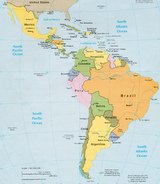It's also a big seller in stores catering to parents who want the safest possible environment for their babies, stores where items labeled "bisphenol A-free" and "phthalate-free" line up next to the cloth diapers and breast pumps.
BornFree is "so popular, their products have been on back order because we can't keep them in stock," says Cara Vidano of Natural Resources, a store here for new and expectant parents.
To anyone not contemplating parenthood, phthalates and bisphenol A sound like something children bring home on chemistry quizzes, not cuddle in their cribs. But these chemicals are at the heart of worldwide scientific investigation and a debate over whether they are harmful to the very young.
Parents, activists and many scientists are concerned that if a baby drinks from a bottle made with bisphenol A or gums a toy made with phthalates, he or she could suffer serious, even permanent, harm.
The European Union and California have banned some phthalates from toys. And a division of the U.S. Department of Health and Human Services concluded that one form of phthalate used in intravenous tubing and other hospital equipment could hamper the development of baby boys' reproductive tracts.
Bisphenol A and phthalates are sometimes called "everywhere chemicals" because they're so widely used. Bisphenol A, which is used to make plastics clear, strong and shatter-resistant, shows up in water bottles, food containers, baby bottles, some dental fillings and the coatings for the inside of cans containing foods. Phthalates (pronounced THAL-ates), which make plastic soft and flexible, are used in toys, rattles, teethers, car interiors and medical devices such as tubing, catheters and intravenous bags.
Nearly every American has been exposed. A 2000 study by the U.S. Centers for Disease Control and Prevention found phthalates in the urine of 75% of people tested. CDC research has shown that 95% of Americans have detectable levels of bisphenol A in their bodies.
There's mounting evidence, some of it in human studies and more in mice and rat studies, that these chemicals also may trigger hormonal changes. That is why they are labeled "endocrine disruptors": They can mimic the hormones that the body releases and are believed to be capable of interfering with the reproductive systems of fetuses and babies, even at extremely low doses.
The American Medical Association urged the Food and Drug Administration last month to require labeling of all medical products containing one phthalate to protect newborns in hospitals. More than 100 hospitals have begun to remove such products from their neonatal nurseries out of concern they could damage baby boys.
Whether these chemicals should be banned or curtailed pits scientists against chemical companies, consumers against manufacturers, the EU against the United States and the state of California against toy makers around the globe.
The U.S. Environmental Protection Agency has asked the National Academies of Science to produce a report on phthalates, a process that could take several years. The National Academies data would help the EPA set a "reference dose" for those chemicals — the maximum amount scientists believe a person could be exposed to in food and water every day without harm. The agency will begin an updated assessment shortly on bisphenol A, which could take years.
Once the EPA sets reference doses, it's up to the U.S. Consumer Product Safety Commission to determine whether their use needs to be regulated in consumer products.
EPA scientists and grant recipients have done much of the groundbreaking work on the possible health effects of endocrine disruptors. But it's slow going.
In 1996, Congress told the EPA to begin testing one type of chemical — pesticides — for hormonal effects. But other potential hormone-disrupting chemicals weren't included in the mandate. EPA officials say they have been working diligently on the program, but the agency has not tested a single pesticide.
In June, the EPA published a draft list of 73 pesticide ingredients to undergo the first round of screening. It will begin next year.
Clifford Gabriel, director of the EPA's office of science coordination and policy, says the agency wasn't able to screen chemicals immediately because proven tests simply didn't exist. It has taken years to develop such tests and, just as important, to make sure they're accurate.
"The science always comes first," Gabriel says. "We're looking at very complicated biological systems."
Parents act on their own
Though the government hasn't made up its mind, parents increasingly have. Marina Borrone of Menlo Park, Calif., aims to protect her home from chemicals that she fears could harm her family or the planet. The restaurant owner and mother shuns most plastic in favor of old-fashioned glass baby bottles and wooden toys.
"Europe took it (phthalates) out of toys years ago," Borrone says. "Why are we so behind?"
Her home state is catching up with her. This month, California Gov. Arnold Schwarzenegger signed into law the country's first ban on the use of phthalates in toys and other children's products. Under the law, any product made for young children that contains more than one-tenth of 1% of phthalates cannot be sold or distributed in California beginning in 2009.
The chemical industry disagrees with that approach.
"We know that exposure to phthalates is very low," American Chemistry Council spokeswoman Marian Stanley says. "We believe that for the amount in which they're used, and the amounts that people are exposed to, there is not a problem."
Today's mothers are leading the push for "greener" consumer goods, says Jeremiah McElwee, who oversees health and beauty products at Whole Foods Markets.
Whole Foods tries to keep up with consumer demand and science, McElwee says. The chain stopped selling baby bottles made of polycarbonate plastic in January 2006 because of concerns about a form of bisphenol A used in the plastic. "The research doesn't say these compounds are bad," says Joe Dickson, Whole Foods' quality-standards coordinator. "It says these products have a lot of question marks around them."
Not so, says the Juvenile Products Manufacturers Association. In a series of fact sheets on the safety of bisphenol A, the association says that plastic containing the chemical "has been rigorously studied and tested by both industry and government for decades." It went on to say that a panel assembled by the National Toxicology Program in August found bisphenol A did "not pose any serious risk to infants, children or adults."
The wording used by the panel was that there was "some concern" that exposure to bisphenol A in utero could cause neural and behavioral effects. The panel expressed only "minimal" and "negligible" concern that problems such as prostate effects and birth defects could be caused by the chemical.
Whole Foods' Michaels says that unlike government agencies, which require a high burden of proof before enacting regulations, many parents naturally follow the "precautionary principle." They often err on the side of caution to protect their children.
Such concern is driving sales for bottles free of bisphenol A.
Medela bottles have always been bisphenol A-free. Evenflo has marketed a glass baby bottle since the era when all baby bottles were glass, but its plastic bottles contain the chemical. Gerber sells several bisphenol A-free bottles, including its Clear View, Fashion Tints and Gentle Flow lines. Playtex Nurser System disposable liners also do not contain the chemical.
Small companies focusing on baby bottles without bisphenol A are doing a brisk business. BornFree went on sale in the USA last year, and the Adiri Natural Nurser made its debut this summer.
Adiri can "barely keep up with demand" and ran out of its smallest bottles just after their launch in August, says Sarah Eisner, vice president of sales and marketing. "We don't want to say all other bottles are evil. You have this brand-new life, so why not start out with materials you know aren't harmful?"
The chemical industry has responded quickly to the threat to its market share. The American Chemistry Council, through a complaint filed with the Better Business Bureau, forced BornFree to change its marketing this year. The company used to pitch its bottles as a safer alternative but was ordered in February not to claim its products were more child- or eco-friendly.
Ron Vigdor, BornFree's president and chief executive officer, says: "Now, we are the 'safe and smart feeding system.' We used to be the 'safer, smarter' feeding system."
The action so far
In December, the National Toxicology Program, part of the U.S. Department of Health and Human Services, concluded that one form of phthalate, called di(2-ethylhexyl), or DEHP, used in intravenous tubing, catheters and other plastic medical equipment, could pose a risk to the proper development of baby boys' reproductive tracts.
Phthalates can block the male hormone androgen, which governs testosterone production and thus the way the male develops.
In animal studies, that hormonal change has meant the urethra forms on the underside of the penis rather than the end, as well as undescended testicles, testicular tumors and decreased sperm counts at maturity, says Stacy Malkan with Health Care Without Harm, a non-profit that helps hospitals phase out DEHP.
Infants who spend weeks in neonatal intensive care units may be exposed to high levels of the chemical, according to the FDA. So far, major hospital chains such as Kaiser Permanente, Catholic Healthcare West, Consorta and Premier have pledged to phase out medical equipment made with DEHP, especially in nurseries.
FDA issued a public health notification in 2002 recommending that alternatives to phthalate-containing plastics be used in medical procedures that might expose newborn boys, women pregnant with boys, and boys just entering puberty. But other federal agencies are years away from even weighing in on whether any other restrictions should be issued.
In Maryland, James Hubbard, a member of the state House of Delegates, says the federal government's failure to remove phthalates from toys and other products shows why local measures are needed. Hubbard, a Democrat, has twice tried to ban phthalates and bisphenol A in children's toys. He blames his bill's defeat on the chemical and toy industries, which lobbied against them.
Hubbard will reintroduce the ban in the next legislative session. "If Congress isn't going to protect the country, we are going to protect our own states," he says.
Other countries already have acted. The European Union, representing 27 nations, decided in 2005 to ban three forms of phthalates in toys and child-care items and restrict the use of three others in items children might put in their mouths. Canada has had a voluntary agreement not to use phthalates in kids' products since 1998.
The science behind the concern
Probably the most widely known endocrine disruptor is DES, a synthetic estrogen given to some pregnant women in the 1950s and 1960s under the mistaken belief that it would prevent miscarriage and premature birth. Since then, according to the CDC, research has shown that women who took DES while pregnant have a modestly increased risk for breast cancer. Their daughters are at increased risk for cancer of the vagina and cervix.
It has been only since the 1990s that researchers have found evidence that common chemicals, including those used in plastics, insecticides, herbicides, fumigants and fungicides, could disrupt the endocrine system.
The strongest data come from fish and other aquatic animals exposed to agricultural chemical runoff. Bizarre physical changes, including male fish with immature eggs in their testicles, have been found in the Potomac River. Vicki Blazer, a pathologist with the U.S. Geological Survey, blames pollutants with estrogen-like properties.
Other researchers have shown that in mammals, endocrine problems can stem from exposure to chemicals that leach from plastics, especially when they are heated. When pregnant rats are exposed to phthalates, their male offspring are born with malformed genitalia.
In humans, a 2005 study by Shanna Swan, a professor of obstetrics/gynecology at the University of Rochester (N.Y.) School of Medicine and Dentistry, showed that sons whose mothers had higher phthalate levels in their urine, in particular a dibutyl phthalate, had a shorter distance between the anus and the genitals.
That measure is regarded as a sign of "demasculinization," Swan says. The boys in whom the distance was shorter were slightly more likely to have other problems, too, such as smaller penises and incompletely descended testicles.
Many babies could be at risk, Swan says, because the phthalate levels she found in the mothers of the affected babies also are found in about 25% of American women.
Bisphenol A research in rodents also has found evidence that exposure can cause a variety of problems: earlier sexual maturation in females exposed before birth, breast cancer, lowered sperm production, possible links to prostate cancer and increased insulin resistance, a precursor to diabetes.
The chemical industry disputes these studies, however. A bisphenol A website, sponsored by the American Chemistry Council, PlasticsEurope and the Japan Chemical Industry Association, says bisphenol A "has been safely used in consumer products and researched and studied for over 40 years."
The Phthalate Esters Panel site, by the American Chemistry Council, says "there is no reliable evidence that any phthalate has ever caused a health problem for a human from its intended use." Some organizations, it says, "have 'cherry picked' the results showing impacts on test animals to create unwarranted concern."
All of this science is new — new enough that the painstaking research necessary for making law hasn't had time to happen. The instrumentation needed to test for extremely low amounts of these chemicals only became cost-effective in the parts-per-million and -billion range in the past 15 years.
George Gray, the EPA's deputy administrator for its Office of Research and Development, says there's more to be done before conclusions can be made.
Rep. Chris Van Hollen, D-Md., says EPA officials are "dragging their feet. … There's no excuse for not having done the scientific research to get the answers we need."
Critics haven't been happy when the EPA did move. Last year the agency released a draft proposal that would have tripled the reference dose for dibutyl phthalate to 0.3 milligrams per kilogram of body weight a day. After criticism, the EPA said last year that it would postpone a final decision.
The EPA has asked the National Academies to provide advice "on the best approach for a cumulative risk assessment on phthalates," says Gray. The agency has begun work on a risk assessment to set a reference dose for bisphenol A.
The controversy may end up in court. In Los Angeles Superior Court, Melissa Melendez and other parents have joined a class-action lawsuit this year against manufacturers and sellers of baby bottles containing bisphenol A.
Melendez says she fears that the chemical, leaching from bottles, may have caused her 19-month-old daughter, Lexie, to show signs of premature puberty.
"It makes me so upset," says Melendez, 25, of Fallbrook, Calif. "To think I might have been harming her without even knowing it."
A hearing is set for Feb. 28. An attorney for the defendants declined to comment on the lawsuit.
Weise reported from San Francisco, Szabo from McLean, Va.
-------------------------------------------------
Ir al Sitio principal Escritos críticos / Ensayos
www.majfud.50megs.com
Reflexiones sobre nuestro tiempo
-------------------------------------------------




No hay comentarios.:
Publicar un comentario